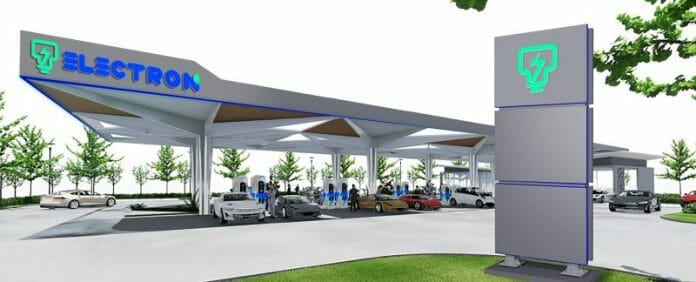Asia has a big role to play in the global transition to net zero as it accounts for almost half of the world’s greenhouse emissions. The rise in green capital expenditure to meet climate challenges will mean significant bond issuances. Asia’s innovative companies within the Electric Vehicle and renewables energy ecosystems also offer investors interesting opportunities in the race to net zero.
Asia scored a few wins during COP27 although the failure to agree on greater emission cuts or to put an end to fossil fuel use disappointed many delegates. At the climate summit, it was agreed that a fund will be set up to cover the climate-related losses and damages that “particularly vulnerable” nations experience. This could be good news for some parts of ASEAN, such as Philippines and Thailand, where severe weather events in 2022 had resulted in a significant loss of agricultural output and disruption of livelihoods. In addition, a coalition led by the US and Japan announced that it will provide USD20bn to help Indonesia shut its coal power plants and bring forward its peak emissions date by seven years to 2030.
THE RISE IN GREEN INFRASTRUCTURE
It is estimated that USD4 to 6tr per annum would be needed globally this decade and beyond to transit to a low-carbon economy. Asia has a big role to play given that it accounts for five out the world’s ten largest greenhouse gas emitters.
Asia alone would probably need USD1tr per annum to help high carbon emitting sectors such as the power generation, transportation, property, agriculture, and manufacturing industries in their net zero transition. This has multiple implications for investors.
Asia’s sustainable bond market will play a pivotal role in funding sovereigns and corporates in their transitions. We expect to see more Green, Social and Sustainability bonds being issued by property companies to build and refurbish energy-efficient buildings. Power generating companies are also likely to raise funds to invest in renewable energy.
Meanwhile governments and quasi-governments will seek debt financing to build low/zero carbon transportation infrastructure. Multilateral development banks as well as supranational developmental institutions can support issuances in domestic debt markets by providing guarantees and sponsorships. Meanwhile, the rise in transition capital expenditure (green capex) is extremely commodity intensive, which should benefit the Emerging Markets.
GETTING TO NET ZERO
Asia is leading innovation in the Electric Vehicle (EV) battery and renewable energy ecosystems. China is a world leader in solar manufacturing and dominates the world’s EV supply chain. Indonesia is planning to build the world’s largest green industrial park in North Kalimantan (solely powered by hydropower and solar), which will house high-tech green industries that will produce solar panels, green aluminium, and lithium-ion batteries.
There are also companies within Malaysia’s vibrant Automated Test Equipment and Outsourced Assembly and Test industry that are designing innovative systems and equipment to detect abnormalities in production lines. Besides saving manpower and energy, detecting defects early significantly reduces e-waste that ends up in landfills. All these present exciting opportunities for investors.
Climate challenges are also impacting companies that are not operating in zero/low carbon sectors. The energy price hikes in 2022 have led some corporates to review their future energy demands and develop plans to manage these risks. While Asia may have lagged the Developed Markets in terms of Environment, Social and Governance (ESG) policies, investment and reporting, more Asian corporates are making efforts to improve their sustainability roadmaps and policies. The number of ESG policies in Asia has doubled since 2016.
Within Asia, investors are also embracing a more balanced approach when considering ESG factors, with a move away from exclusions to greater engagement. In particular, we see room for greater engagement especially on environmental and governance issues to drive long-term value amongst Japanese corporates. According to MSCI ESG Research, only 10% of Japanese companies are rated as ESG Leaders (ESG ratings of AAA, AA), far behind European companies.
ASIA’S BIG ROLE IN CARBON TRADING
The demand for carbon credits has increased as more companies make carbon neutral or net zero commitments. According to a McKinsey study, global carbon offset demand is set to grow 15x by 2030 and 100x by 2050. Global initiatives to drive more transparency, standardisation, and detailed verification of carbon credit projects will help develop more robust carbon markets. At COP27, the Global Carbon Trust agreed to create standardised contracts for carbon
credits, embed third-party monitoring and verification of project performance, as well as provide arbitration mechanisms for projects that fail to meet targets.
Asia can play a significant role as a carbon trading hub. There have been efforts to grow Asia’s carbon offset ecosystem with the establishment of the Climate Impact X, a Singapore-based
global carbon exchange and marketplace, in 2021. Hong Kong also launched a carbon trading platform in October 2022, while Malaysia has expressed similar ambitions. The regulatory
environment is also becoming more favourable for growing the carbon offset market with Singapore allowing 5% of carbon tax to be met by carbon offsets.
Meanwhile, Asia’s high quality natural ecosystems mean that more than 50% of nature-based carbon offset supply (using plants, trees, soil or the ocean to remove carbon from the atmosphere) resides in Asia, potentially making Asia a key supplier of nature-based carbon offsets. The average price of carbon offsets rose by more than 50% from 2020 to 2021 with high quality nature-based credits commanding more than a 200% premium at USD8/tCO2e .
Therefore, Asian companies that are able to supply high quality offsets can benefit from offset price increases although specialised resources and knowledge will be needed to develop nature-based solutions (includes conservation, afforestation, reforestation, forest management, grasslands). Only high-quality carbon offsets can help with offsetting residual emissions that cannot be reduced and enable companies to better meet their net zero commitments. This may help to improve ESG ratings in the long term, although it is still early days.
Article attributed: Eastspring’s Market Outlook 2023 – Navigating the global reset









